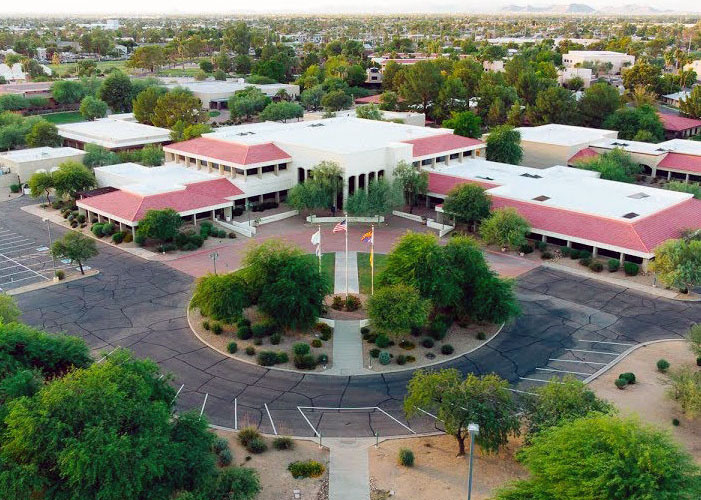
In 2019, Arizona Christian University moved to a new campus, revamped its degree offerings, experienced a 20 percent enrollment bump, and changed information systems twice between January and June. “Not ideal,” said Steve Adamson, Provost and Executive Vice President of the school, grinning at his understatement.
ACU was founded in 1960 as Southwestern Conservative Baptist Bible College in a small brick building in north Phoenix, Arizona. SCBBC focused on training pastors and missionaries, but as the college grew over the years so did its scope. In 2011 it changed its name to Arizona Christian University and its focus to faith-based liberal arts instruction.
Adamson joined ACU as Provost within a few years of the change. His chief responsibilities were to update the degree offerings and the curriculum, adding new certificate programs and getting the ball rolling on an online program and a new Master’s degree. One thing kept tripping him up. ACU was using an information system “built on a 1980’s database structure”. To save money, the school had opted not to purchase certain modules, deciding rather to rely on in-house programmers to cover the gaps. By the time Adamson had arrived, years of bolting-on house-built databases had created a confusing morass of “different tables and different fields that all mean the same thing but don’t point to the same place,” leading to “difficulties pulling data records” and an information system “that was starting to collapse around [ACU’s] feet.”
In January 2019 ACU moved over to a system designed for technical schools, but “by March or April it became clear that it did not understand the four-year university.” Adamson had used Populi at another college and knew it would work for Arizona Christian. The University decided to make the change—the second information system change that year!—over the Memorial Day weekend, “with less than three months before the next semester” was to start. By that time, the school needed to “migrate data, package student [financial aid], get degrees and curriculum built, move transcripts over… at the same time as moving to a new campus.”
“Not ideal,” said Adamson. “But we knew… we had to make a change to a product that was tested, that understood the four-year space… that understood what a college needs in the thousand-student enrollment range with the growth potential to go higher.”
Among the things Adamson had known about Populi going into it was its ease of use and the fact that it doesn’t charge more for extra functionality—ACU got everything it needed, right out of the proverbial box, without having to work around the technical limitations of their previous systems. “It took a matter of one week for the people in the registrar’s office to figure out how to build an academic term, programs, put in the course catalog, start building courses, import students…” Meanwhile, the financial aid and student billing offices were “building tuition schedules, the scholarship structure, and figuring out invoicing.”
ACU got rolling with Populi over Memorial Day. “At the end of the first week of June, everyone in the room was saying, ‘This system works!’ By the time we hit mid-June—two weeks in—we had already accomplished more with Populi than we had in four months with the system we’d been trying to switch to” before.
Exercising his knack for understatement, Adamson summed it up thusly: “Populi’s a useful tool.”
